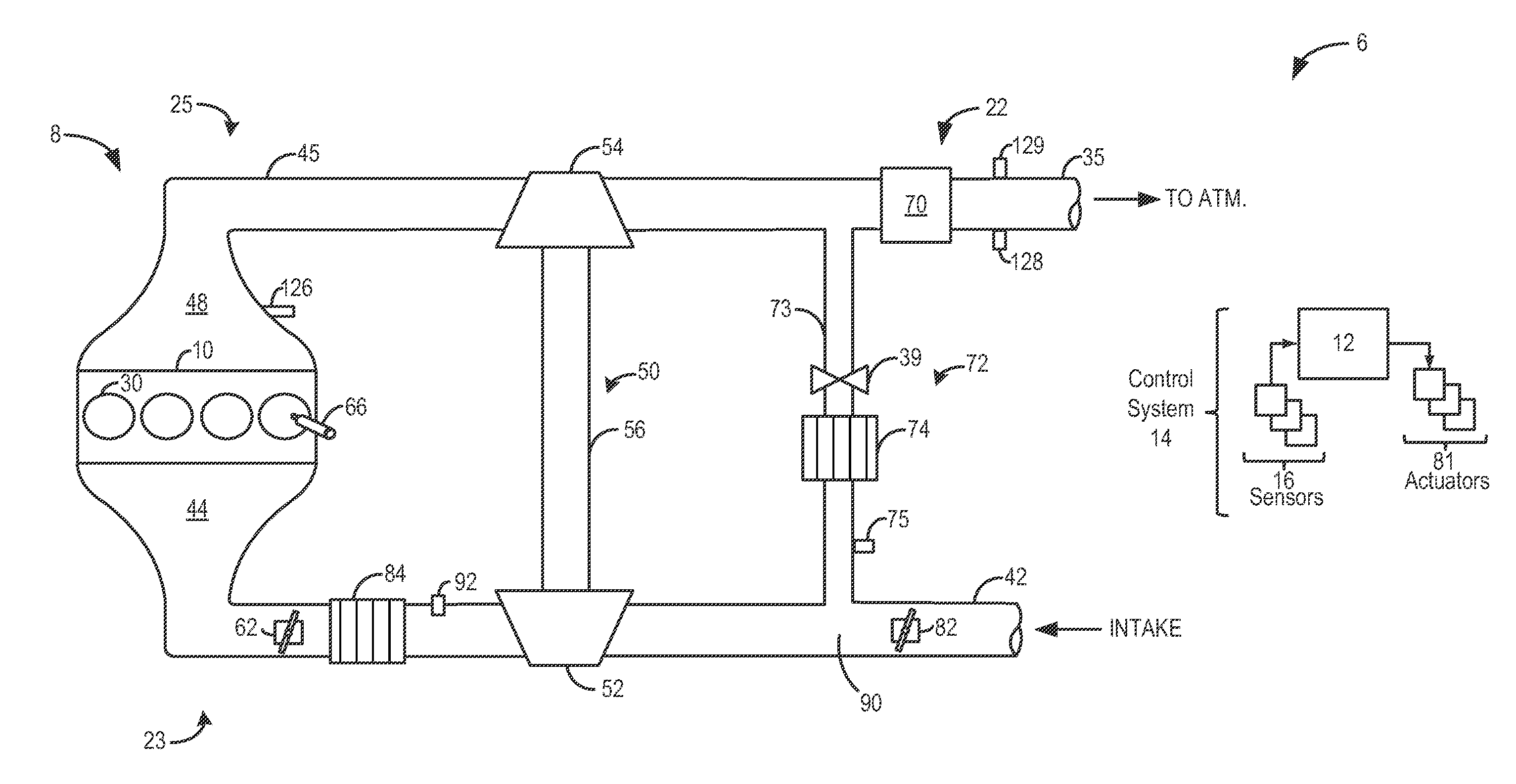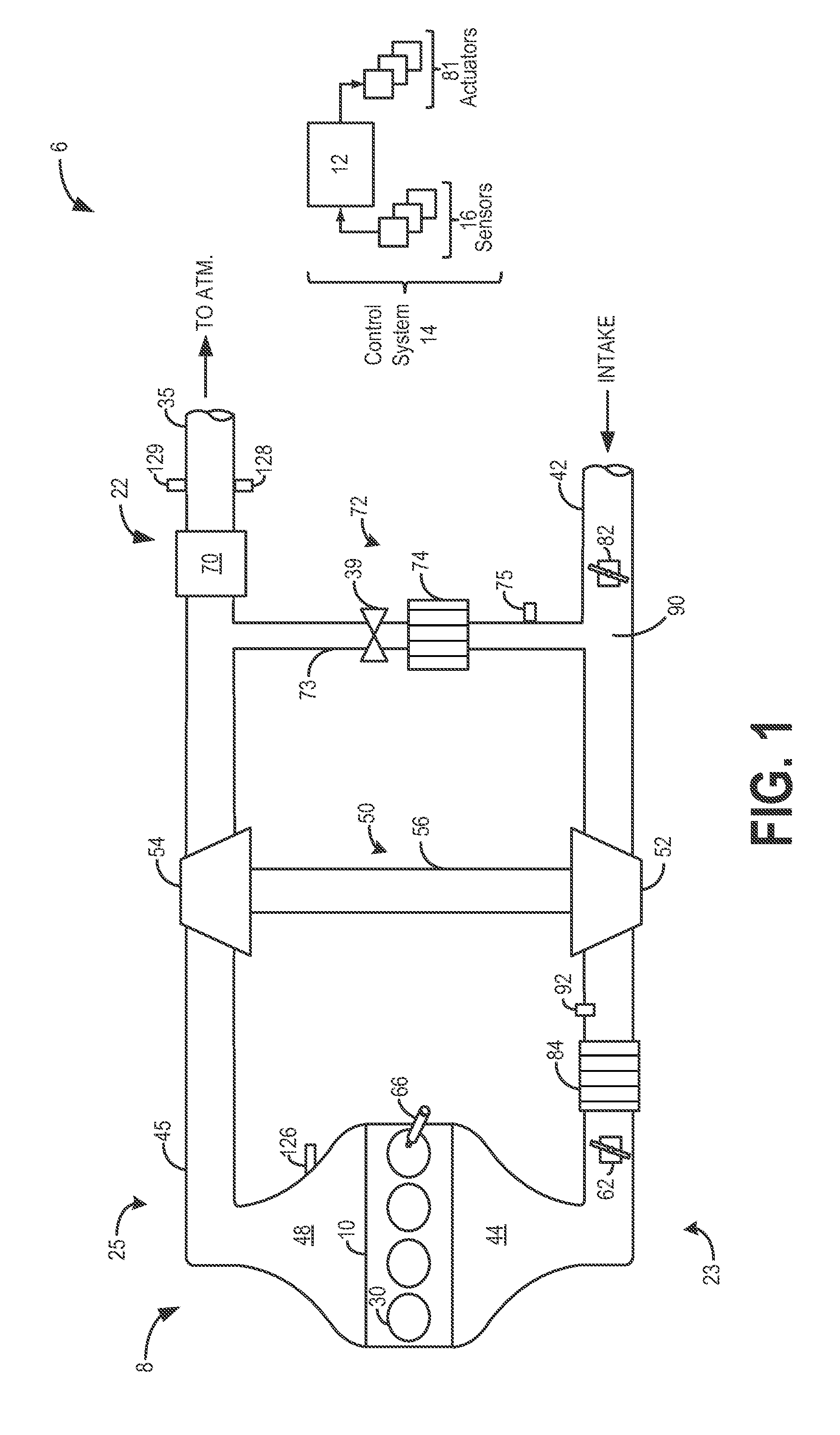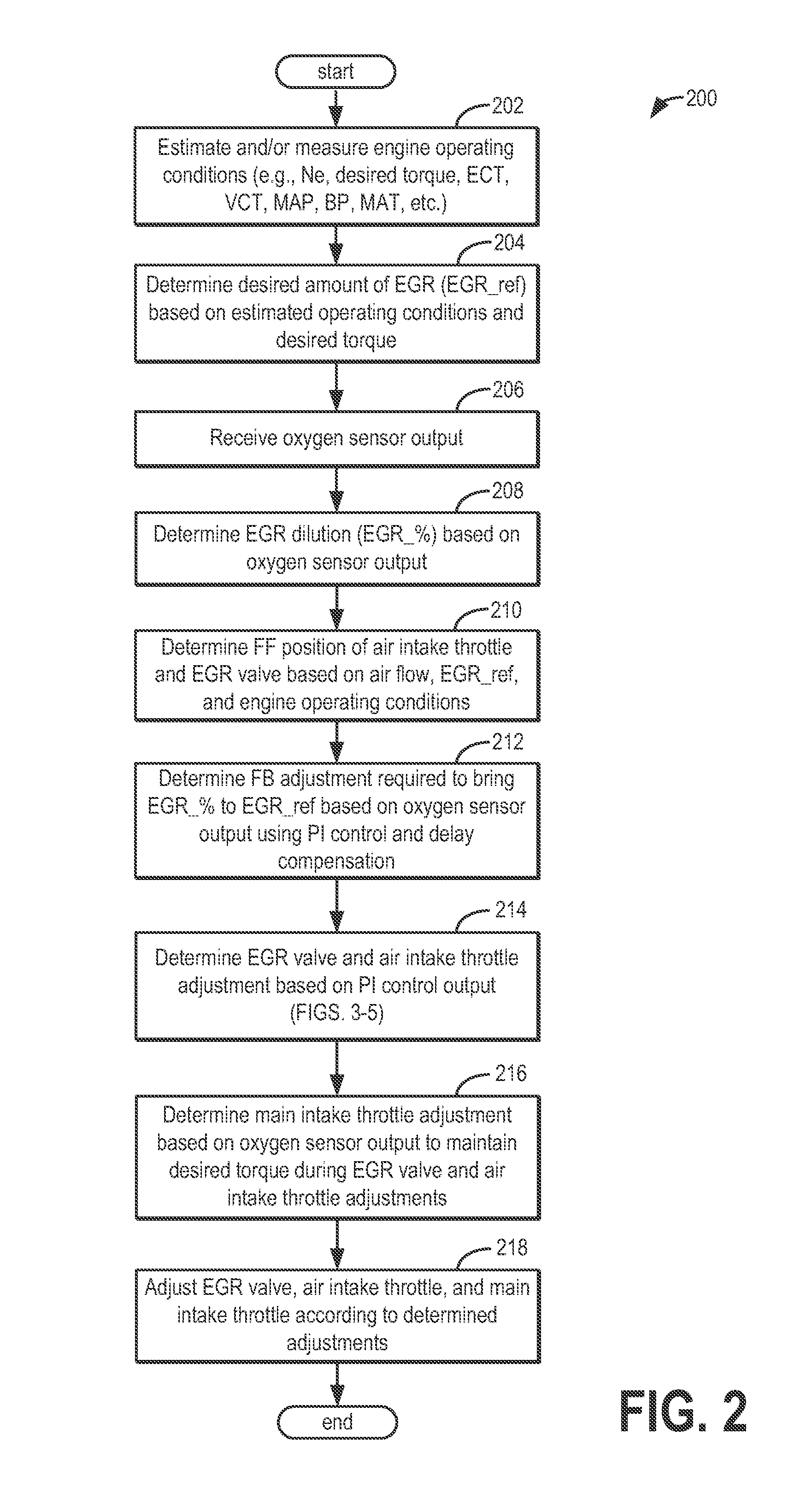Method and system for exhaust gas recirculation control
a technology of exhaust gas recirculation and control method, which is applied in the direction of electric control, machines/engines, mechanical equipment, etc., can solve the problems of engine performance and engine emissions degradation, transient changes in torque, and delay in providing the desired egr flow, so as to reduce exhaust emissions and improve fuel economy
- Summary
- Abstract
- Description
- Claims
- Application Information
AI Technical Summary
Benefits of technology
Problems solved by technology
Method used
Image
Examples
Embodiment Construction
[0016]The following description relates to systems and methods for controlling dilution of exhaust gas for exhaust gas recirculation based on the output of an intake oxygen sensor. As shown in FIG. 1, a boosted engine may be configured with a low-pressure exhaust gas recirculation (EGR) system that may include an EGR valve for adjusting an amount of exhaust gas recirculated to the engine intake. The engine may further include a plurality of intake throttles including at least a first and second intake throttle coupled to the engine intake, the throttles configured to adjust an amount of fresh air directed to the engine intake. Specifically, the first, upstream, air intake throttle may adjust an amount of fresh air diluted with the exhaust gas in the EGR flow, while a second main intake throttle, downstream of the first air intake throttle and the EGR valve, may adjust the flow of an intake gas stream entering the engine intake. An oxygen sensor coupled to the engine intake may be co...
PUM
 Login to View More
Login to View More Abstract
Description
Claims
Application Information
 Login to View More
Login to View More - R&D
- Intellectual Property
- Life Sciences
- Materials
- Tech Scout
- Unparalleled Data Quality
- Higher Quality Content
- 60% Fewer Hallucinations
Browse by: Latest US Patents, China's latest patents, Technical Efficacy Thesaurus, Application Domain, Technology Topic, Popular Technical Reports.
© 2025 PatSnap. All rights reserved.Legal|Privacy policy|Modern Slavery Act Transparency Statement|Sitemap|About US| Contact US: help@patsnap.com



